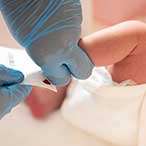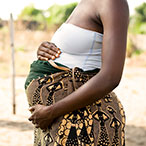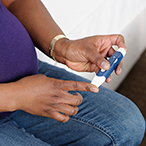News & Updates
NICHD issues Releases and Media Advisories to the news media. Science Updates and Spotlights explain NICHD research findings and public health issues to the general public. An Item of Interest is a short announcement such as an initiative launch or a notable staff change. Director’s Corner posts are monthly updates from the NICHD director.
Spotlight: Selected NICHD Research Advances of 2020
Media Advisory: Higher red cell transfusion threshold offers no advantage for treating preterm infants
Media Advisory: Infant opioid withdrawal therapy varies widely by treatment site
Spotlight: Medical Rehabilitation Research Center Marks 30th Anniversary
Release: Postpartum depression may persist three years after giving birth
Release: Iodine exposure in the NICU may lead to decrease in thyroid function, NIH study suggests
Science Update: Pregnancy, birth complications higher among deaf and hard of hearing women, suggests NIH-funded study
Release: NIH-funded study to evaluate drugs prescribed to children with COVID-19
Item of Interest: Biospecimens from National Children’s Study pilot now available
Release: NIH to test one-dose antibiotic for the prevention of maternal and infant sepsis
Media Advisory: NIH-funded study to investigate pregnancy outcomes resulting from the COVID-19 pandemic
Media Availability: NIH maternal mortality workshop to address conditions that increase the risk of life-threatening pregnancy complications
Science Update: Earlier birth may increase the risk for developmental delays, NIH study suggests
Science Update: Frequent driving practice linked to lower crash risk among teen drivers, NIH study finds
Release: NIH-funded research leads to pediatric labeling updates for doxycycline, clindamycin and caffeine citrate
Media Advisory: Gene mutation enhances cognitive flexibility in mice, NIH study suggests
Media Advisory: Researchers develop language test for people with Fragile X syndrome
Women in Science: Diana Bianchi and the Value of Connections
Science Update: Fetal weight gain may begin long before gestational diabetes is commonly diagnosed
The excess body fat seen in infants born to women with gestational, or pregnancy-related, diabetes is associated with higher maternal blood sugar levels as early as the 10th week of pregnancy—long before the time when women are usually screened for the condition, according to a study by researchers at the National Institutes of Health. Moreover, weight gain in the fetuses of women with gestational diabetes first becomes apparent in the 28th week of pregnancy, when many women are first tested for the condition.




















 BACK TO TOP
BACK TO TOP